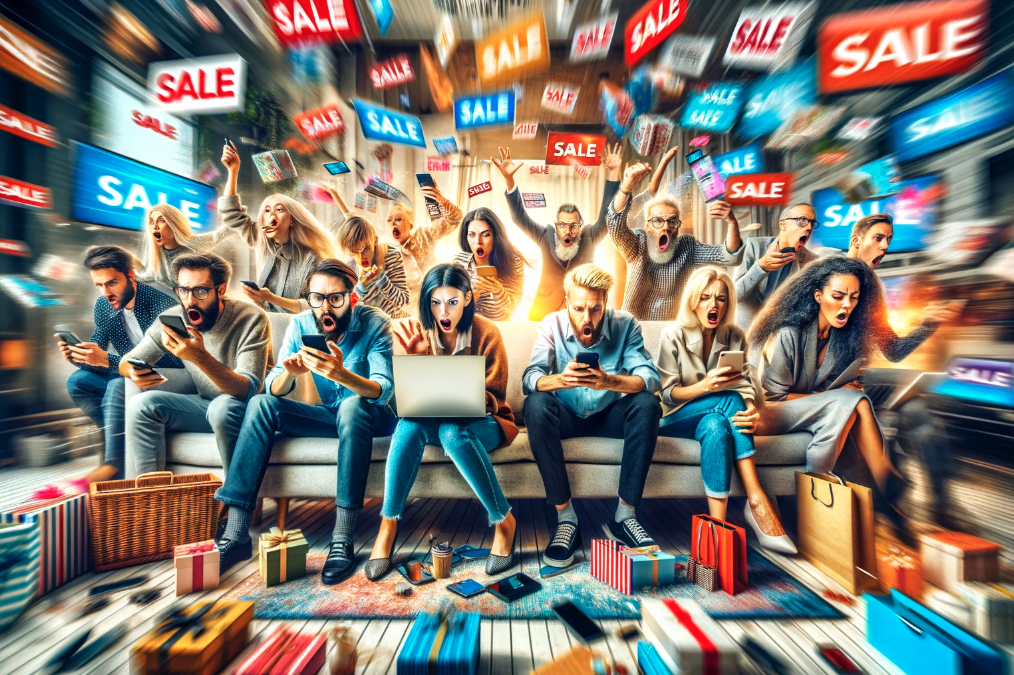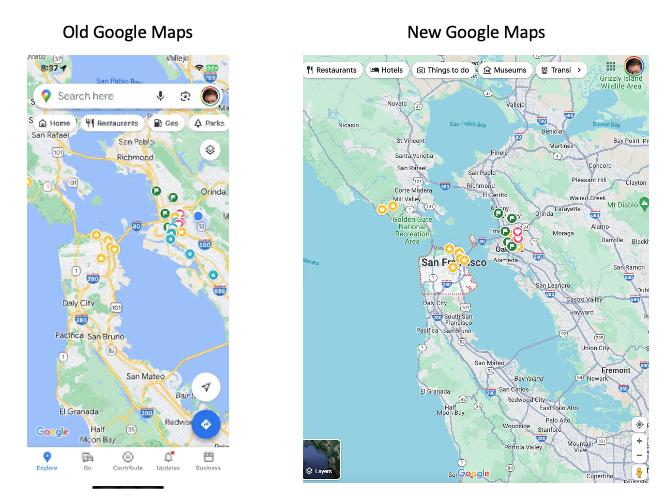Shoppers Go Wild, Google Map Colors, Fake Reviews News

Black Friday: Consumers Go Wild
Fears about soft consumer spending on Black Friday proved unfounded. Driven by discounts, US shoppers opened their wallets and generated a record $9.8 billion in online sales on Friday. (Thanksgiving saw $5.6 billion.) E-commerce growth on Black Friday was 7.5% year over year, according to Adobe Analytics. Mobile drove $5.3 billion or 54% of the total. Mobile conversions, however, were roughly 50% of those on the desktop. Salesforce, with different and larger numbers, said Black Friday sales were $16.4 billion in the US (up 9%) and almost $71 billion globally (up 8%). It estimated that 78% of all traffic was mobile, which seems a bit high but plausible. And Mastercard reported e-commerce sales were up 8.5%. The card issuer added that in-store sales were up 1.1% over 2022. Roughly 22% of online orders were picked up in-store, according to Salesforce. Last year, so-called Cyber Monday saw record sales of $11.3 billion in the US (Adobe). It was the biggest online shopping day "of all time." We'll see if 2023 can beat it.

Our take:
- I was in Best Buy on Friday picking up (BOPIS) a Mac Mini. I don't know how representative it was of stores generally across the US. But it was full.
- Q4 2022 online sales were just under 15% of total retail sales according to the US Census Bureau. They're likely to top 16% and get close to 17% this year.
- It's not clear yet whether this shopping burst will translate into sustained spending and drive strong Q4 numbers. It's likely to vary by retailer.
Google Maps Colors
A month ago, Google announced a bunch of updates to Google Maps. Among them, Immersive View for Routes, more EV charging data, more images, Lens in Maps (AR), more detailed navigation – and new colors. The new Map colors have proven to be surprisingly controversial with some people. Former Google Maps designer Elizabeth Laraki, for example, has weighed in with her take on the colors and design features (see also, Steve Coast). Laraki's overall assessment: "It feels colder, less accurate and less human." She adds, "If the goal was better usability, the team missed a big opportunity: Google Maps should have cleaned up the crud overlaying the map." She then makes a number of very specific recommendations about how to simplify the map and remove features she considers to be extraneous. "The map should be sacred real estate," she adds. "Only things that are highly useful to many people should obscure it." Mike also questioned the value of some of the new features in a previous newsletter (Google Maps bloat).

Our take:
- One could make conceptually similar criticisms about the Google SERP – there are now too many elements, too much clutter.
- Google Maps and Apple Maps are now less visually distinct after this redesign, although Google has more features.
- Google's local data and Knowledge Graph are what make Google Maps a superior product. Otherwise, Apple Maps could supplant it for iPhone users.
Fake Reviews In the News
'Tis the season for fake review reporting. Two weeks ago the NY Times ran a story, with a major Google focus, "Fake Reviews Are Rampant Online. Can a Crackdown End Them?" And just a few days ago, the WSJ ran a similar story. but focused on Amazon and the surrounding ecosystem of review fraud (i.e., Facebook groups). The WSJ piece cites multiple studies that show: 1) fake reviews boost search rankings on Amazon, 2) fake reviews impact buying and, surprisingly, 3) frequent online shoppers are more vulnerable to review fraud. "Even a 0.2-percentage-point increase can dramatically improve how high a product ranks in an Amazon search," the article states. It further cites a study that found UK consumers shown fake reviews "were 5.8 percentage points more likely to pick products [a UK consumer group] had recommended against buying. Overall, one additional star increased demand by 38%." This suggests fake reviews have a material impact on purchase behavior. The idea that frequent online shoppers are more susceptible to review fraud is explained by their tendency to look quickly at star ratings and review counts but not actually read many reviews.

Our take:
- As we've previously said, depending on the category, 66% - 75% of consumers aren't reading reviews, even as they use them to decide purchases.
- These articles amount to public shaming of Google and Amazon, who provide "zero-tolerance" PR statements but continue with uneven enforcement.
- The incentives to cheat – better rankings, increased conversions – mean that, despite "zero-tolerance." fake reviews will continue on the major platforms.
Recent Analysis
- Local Review Landscape: Insights from Whitespark's GBP Analysis.
Short Takes
- How to move your SAB without destroying your ranking.
- Reddit starting to rank for SMB searches (can spam be far behind?).
- What went wrong at Google and the deterioration of its early culture.
- Mozilla launches Fakespot Chat assistant with fake review analysis.
- As more advertisers pause ads, X may lose $75M by end of year (NYT).
- New breakthrough may have triggered OpenAI firing drama.
- Your next computer/smartphone will have on-device AI (WSJ).
- How today's "billionaire bros" compare to the robber barons of old.
- Google testing bolder, more prominent favicons.
- The rise of "ghost newsrooms," local pubs without full-time staff (WSJ).
- Americans are torn over holiday music in retail stores.
- Holiday shoppers deny influence of ads, email marketing, endorsements.
- Gen Z expected to overtake Baby Boomers in the workforce next year.
Listen to our latest podcast.

How can we make this better? Email us with suggestions and recommendations.

